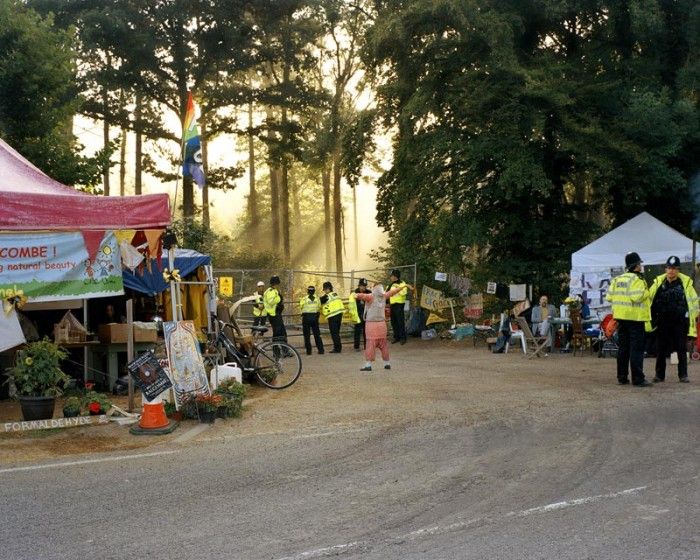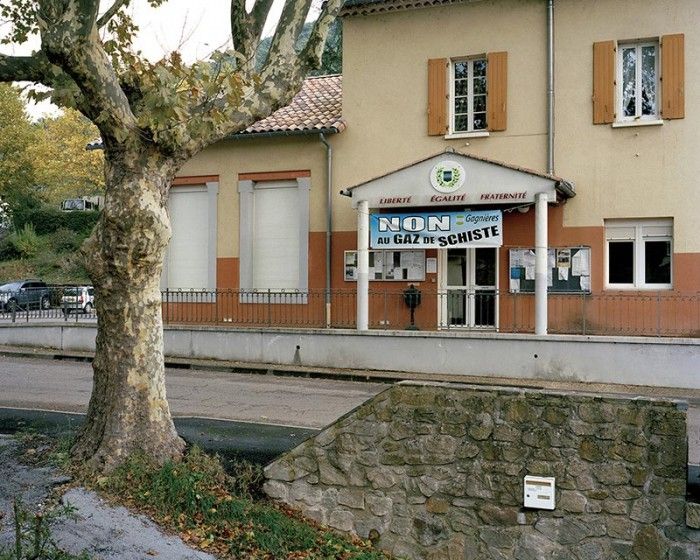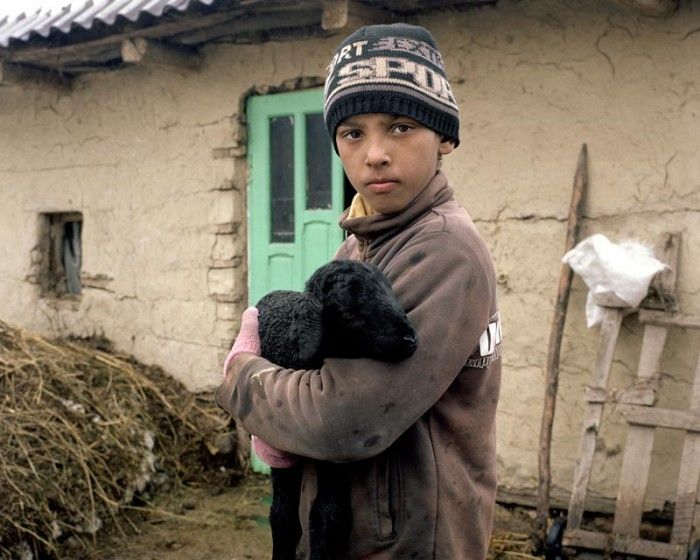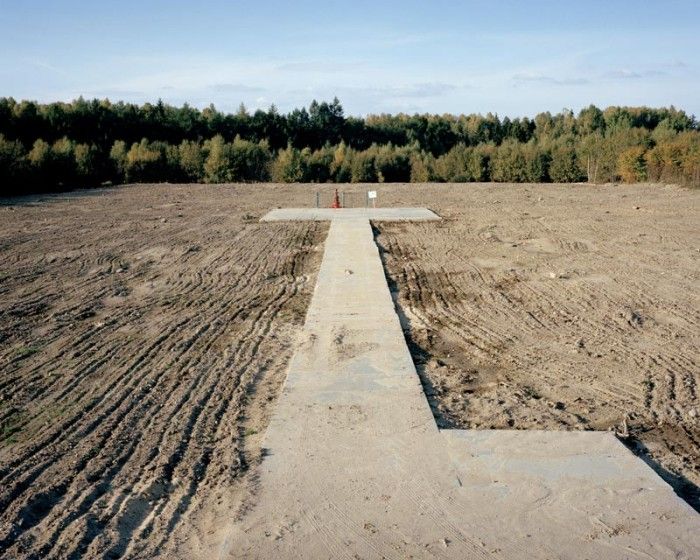blog
Interview with the photographers of SooS Chronicles

Balcombe, United Kingdom 2013 An anti-fracking protester in front of the gate of the Balcombe drilling site, West Sussex.
F-Stop Magazine: What is Soos Chronicles? How did it come about?
SooS Chronicles: SooS Chronicles is an Italian collective of documentary photographers founded by Filippo Bardazzi and Laura Chiaroni. We first merged our different experiences – Laura graduated in Photography at L.A.B.A. (Libera Accademia delle Belle Arti in Florence) and Filippo is a journalist graduated in Philosophy – in 2011 thanks to a collaboration with Archivio Fotografico Toscano for the conservation and valorization of historical photographic collections. Our first long term project, Standing Still, has been first published and awarded in 2013. Our most recent documentary project, The Great Illusion, focuses on unconventional gas extractions in Europe.
F-Stop: How did you first become involved in photography and what led to you working in this medium as an artist?
SC: We both approached photography as we were very young, but we soon raised awareness about our will to use this medium to frame the world and in particular to tell stories we were interested in. From the beginning of our careers we focused our attention on documentary photography, especially on those visual narratives involving a strong relationship between man and environment and big changes connecting past and present.
We see photography as the most direct and concise medium, perhaps the only one that uses the bare reality both to tell and to let people imagine further just through an immediate contact. This ambivalent power of the medium is very important for our goal.
F-Stop: The “Telling Stories” issue of F-Stop Magazine includes images from your project The Great Illusion, can you tell us about this project? What led to this project?
SC: The Great Illusion is a project focusing on the search for unconventional gas in Europe. Our interest was particularly given to the environmental and social risks that this process could bear.
After Standing Still, our first feature we realized in the United States, we were looking for a theme that could embrace our continent in a whole. In early 2013 the political and economical debate in Europe was – and to some extent still is and will be in the future – all about energetic independence from Russian and Middle-East gas and oil supplies. Several European countries were therefore thrilled about the idea of a second shale gas boom, all within their borders, after the “American revolution” spread by fracking and new extraction techniques. Unfortunately for them and for big oil companies, the drilling tests are confirming that European unconventional gas deposits are poorer than expected and their extraction would have limited benefits and no significant impact on consumption.

Cévennes, France 2014
In July 2011 France was the first European country to pass a law (“Loi Jacob”) banning the technique of hydraulic fracturing for extracting natural gas and oil.
F-Stop: Can you discuss your process for making these images or your creative process more generally? How do you choose what or who to photograph, what are you looking to capture?
SC: Even though we both know that photography could be a solitary job, definitely an activity for pure loners, we both have always been fascinated by the idea of working not on our own. We are trying to educate our point of view in finding the most direct – but still eye-catching – way to tell our stories. Being two people working as a team is already a great help for each other: we both lose our certainties and positions while discussing about pictures and editing and we suggest an instant feedback for one another for our ideas and experiments.
We always shoot on medium format film for our projects. The Great Illusion was no exception. Once the topic is chosen, the first phase of our work is always linked to get appropriate contacts and to collect information about the issue. In this case the anti-fracking groups were the first to answer, while big oil companies never replied to our several requests. As for the shooting phase, we started our work with the aim to remain neutral. Then, little by little we decided to get closer to the villagers’ perspective, often worried about their health and land. The role of fixers and local guides is crucial. It is thanks to them that we had the chance to get into the lives of farmers in Romania and Poland: something we definitely had to photograph. In more than 90% of the cases, we met farmers who didn’t speak either English or Italian and could only count on farming and cattle rearing for their sustenance. A sudden land grabbing or an unexpected pollution of the waters could irreparably damage their poor economy.

Paltinis, Romania 2014
Paltinis, a small village in the Vaslui region, is mainly populated by Gypsies. Here Chevron had planned to set up a shale gas well, before officially quit Romania due to “poor exploration results and prolonged protests by environmentalists”.
F-Stop: What do you hope people see or feel or perhaps learn when they look at your photographs?
SC: We don’t believe that people could learn anything from any picture and we are definitely not confident that the expression “learning from photography” has any sense. Photography, in our opinion, has a little to do with knowledge but it has much in common with the action of showing, or pointing.
As for this work, we didn’t know anything about fracking before. We collected information that turned out to be useful in the process of picking out the best scenes to include in the series. Fracking operations definitely have deep consequences and generate big concerns but with our pictures we never stressed the point with close or graphic images. It simply not suits our style and view. Our pictures just show reality from a certain perspective and we felt it was important to visit both the countries that were allowing fracking and those who are still banning the explorations, in order to give people better tools to take position on the theme.
F-Stop: Do you have a favorite image in this series? If so, which one and why is it the image that speaks to you most?
SC: We usually don’t consider our pictures as single pieces, but we are used to thinking about them always as a part of the whole series. Nevertheless, if we were to choose a “favorite” image in The Great Illusion, we’d go for the one showing the child holding a lamb in the Romanian village of Paltinis. It is among the most emotional ones inside our feature: the experience of visiting a gypsy village where Chevron had plans to set up a fracking site deeply touched the both of us. It is uncommon to imagine such life conditions within the European Union.

Miłowo, Poland 2014
Deforestation caused by test extractions of shale gas in Milowo, northern Poland.
F-Stop: Are you working on any other projects currently?
SC: Yes, we recently started shooting for a new project about Mugello, an area near Florence, Italy. The work will focus on the social development and environmental transformation of the valley from the beginning of the XX century to nowadays. In addition, we are at an early stage of planning and fundraising for other projects to be realized in the Baltic area and again in the United States. Stay tuned!
F-Stop: What photographers or other artists inspire you?
SC: The work of Alec Soth is the one that inspires us most directly. Yet, he is not the only photographer that had a key role for our education and background. We love the the elegant inquisitiveness of Joel Sternfeld, we look for the same attention for the daily common atmosphere of Luigi Ghirri and we would like to be as brave and impudent as Robert Capa.
For more work by Soos Chronicles: www.sooschronicles.com
Location: Online Type: Interview
One response to “Interview with the photographers of SooS Chronicles”
Leave a Reply
Events by Location
Post Categories
Tags
- Abstract
- Alternative process
- Architecture
- Artist Talk
- Biennial
- Black and White
- Book Fair
- Car culture
- charity
- Childhood
- Children
- Cities
- Collaboration
- Cyanotype
- Documentary
- environment
- Event
- Exhibition
- Family
- Fashion
- Festival
- Film Review
- Food
- Friendship
- FStop20th
- Gun Culture
- Italy
- journal
- Landscapes
- Lecture
- love
- Masculinity
- Mental Health
- Museums
- Music
- Nature
- Night
- photomontage
- Podcast
- Portraits
- Prairies
- River
- Still Life
- Street Photography
- Tourism
- UFO
- Wales
- Water
- Zine

[…] been interviewed by F-Stop Magazine for Issue #74 about the theme “Telling Stories”. Here you can find the whole interview and some images featured on the magazine. Take a […]